Related Research Articles
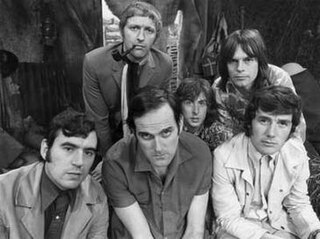
Monty Python were a British comedy troupe formed in 1969 consisting of Graham Chapman, John Cleese, Terry Gilliam, Eric Idle, Terry Jones, and Michael Palin. The group came to prominence for the sketch comedy series Monty Python's Flying Circus, which aired on the BBC from 1969 to 1974. Their work then developed into a larger collection that included live shows, films, albums, books, and musicals; their influence on comedy has been compared to the Beatles' influence on music. Their sketch show has been called "an important moment in the evolution of television comedy".

A circus is a company of performers who put on diverse entertainment shows that may include clowns, acrobats, trained animals, trapeze acts, musicians, dancers, hoopers, tightrope walkers, jugglers, magicians, ventriloquists, and unicyclists as well as other object manipulation and stunt-oriented artists. The term circus also describes the field of performance, training and community which has followed various formats through its 250-year modern history. Although not the inventor of the medium, Newcastle-under-Lyme born Philip Astley is credited as the father of the modern circus.
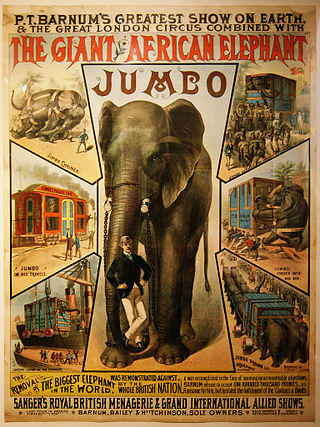
Jumbo, also known as Jumbo the Elephant and Jumbo the Circus Elephant, was a 19th-century male African bush elephant born in Sudan. Jumbo was exported to Jardin des Plantes, a zoo in Paris, and then transferred in 1865 to London Zoo in England. Despite public protest, Jumbo was sold to P. T. Barnum, who took him to the United States for exhibition in March 1882.

Leicester Square is a London Underground station in the West End of London, within walking distance of Theatreland and Chinatown. It is located on Charing Cross Road, a short distance to the east of Leicester Square itself.

Shaftesbury Avenue is a major road in the West End of London, named after The 7th Earl of Shaftesbury. It runs north-easterly from Piccadilly Circus to New Oxford Street, crossing Charing Cross Road at Cambridge Circus. From Piccadilly Circus to Cambridge Circus, it is in the City of Westminster, and from Cambridge Circus to New Oxford Street, it is in the London Borough of Camden.

Piccadilly Circus is a London Underground station located directly beneath Piccadilly Circus itself, with entrances at every corner. Located in Travel-card Zone 1, the station is on the Piccadilly line between Green Park and Leicester Square stations and on the Bakerloo line between Oxford Circus and Charing Cross stations.
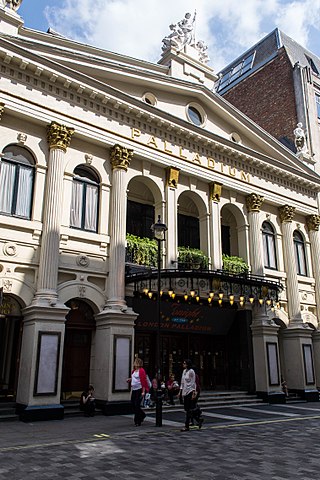
The London Palladium is a Grade II* West End theatre located on Argyll Street, London, in Soho. The theatre was designed by Frank Matcham and opened in 1910. The auditorium holds 2,286 people. Hundreds of stars have played there, many with televised performances. Between 1955 and 1969 Sunday Night at the London Palladium was staged at the venue, produced for the ITV network. The show included a performance by the Beatles on 13 October 1963; one newspaper's headlines in the following days coined the term "Beatlemania" to describe the hysterical interest in the band.

Philip Astley was an English equestrian, circus owner, and inventor, regarded as being the "father of the modern circus". Modern circus, as an integrated entertainment experience that includes music, domesticated animals, acrobats, and clowns, traces its heritage to Astley's Amphitheatre, a riding school that Astley founded in London following the success of trick-riding displays given by him and his wife Patty Jones in 1768. Astley's first competitor was equestrian Charles Hughes, who had previously worked with Astley. Together with Charles Dibdin, a famous author of pantomimes, Hughes opened a rival amphitheatre in London, which Dibdin called the Royal Circus and Equestrian Philharmonic Academy.
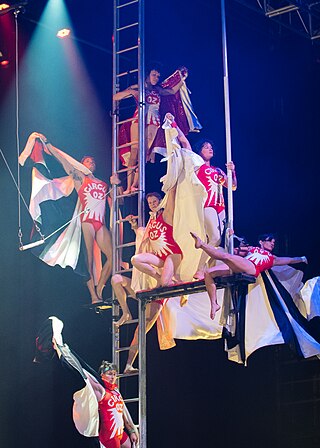
Circus Oz is a contemporary circus company based in Australia, collectively owned by its Membership, founded in 1978. Its shows incorporate theatre, satire, rock 'n' roll and a uniquely Australian humour.

The Ringling Bros. and Barnum & Bailey Circus, also known as the Ringling Bros. Circus, Ringling Bros., the Barnum & Bailey Circus, Barnum & Bailey, or simply Ringling, is an American traveling circus company billed as The Greatest Show on Earth. It and its predecessor have run shows from 1871, with a hiatus from 2017 to 2023. They operate as Ringling Bros. and Barnum & Bailey. The circus started in 1919 when the Barnum & Bailey's Greatest Show on Earth, a circus created by P. T. Barnum and James Anthony Bailey, was merged with the Ringling Bros. World's Greatest Shows. The Ringling brothers purchased Barnum & Bailey Ltd. in 1907 following Bailey's death in 1906, but ran the circuses separately until they were merged in 1919.
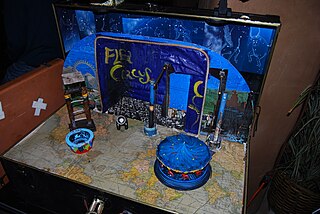
A flea circus is a circus sideshow attraction in which fleas are attached to miniature carts and other items, and encouraged to perform circus acts within a small housing.

The Roundhouse is a performing arts and concert venue at the Grade II* listed former railway engine shed in Chalk Farm, London, England. The building was erected in 1846–1847 by the London & North Western Railway as a roundhouse, a circular building containing a railway turntable, but was used for that purpose for only about a decade. After being used as a warehouse for a number of years, the building fell into disuse just before World War II. It was first made a listed building in 1954.

West End theatre is mainstream professional theatre staged in the large theatres in and near the West End of London. Along with New York City's Broadway theatre, West End theatre represents the highest level of commercial theatre in the English-speaking world. Seeing a West End show is a common tourist activity in London. Famous screen actors, British and international alike, frequently appear on the London stage.

The Crazy Gang were a group of British entertainers, formed in the early 1930s. In the mature form the group's six men were Bud Flanagan, Chesney Allen, Jimmy Nervo, Teddy Knox, Charlie Naughton and Jimmy Gold. The group achieved considerable domestic popularity and were a favourite of the royal family, especially King George VI.
The Alhambra was a popular theatre and music hall located on the east side of Leicester Square, in the West End of London. It was built originally as the Royal Panopticon of Science and Arts opening on 18 March 1854. It was closed after two years and reopened as the Alhambra. The building was demolished in 1936. The name was also adopted by many other British music hall theatres located elsewhere; in Bradford, in Hull and in Glasgow etc. The name comes from association with the Moorish splendour of the Alhambra palace in Granada, Spain.
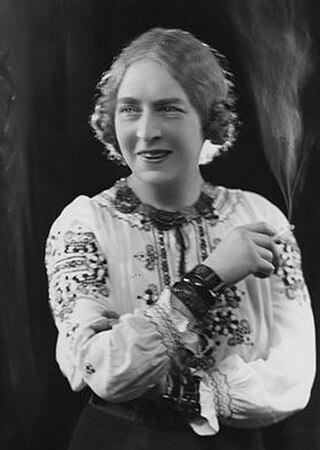
Dame Laura Knight was an English artist who worked in oils, watercolours, etching, engraving and drypoint. Knight was a painter in the figurative, realist tradition, who embraced English Impressionism. In her long career, Knight was among the most successful and popular painters in Britain. Her success in the male-dominated British art establishment paved the way for greater status and recognition for female artists.

Human Cannonball is a supervillain appearing in American comic books published by Marvel Comics.
Michael Bruce Davis is a comedic American juggler. He came to nationwide attention in the United States in the early 1980s, appearing on NBC's Saturday Night Live six times, the only professional juggler to perform on the show.
The Circus of Horrors was a British-based contemporary circus created by John 'Doktor' Haze and Gerry Cottle. They were first seen performing at the Glastonbury Festival in 1995. Blending horror, black comedy and rock music with circus acts, it uses goth and steampunk imagery, and references Victorian freak shows and burlesque. They were semi-finalists on Britain's Got Talent in 2011.
References
- ↑ Sivaji, V. (29 Sep 2018). "Carrying legacy in circus work". Malay Mail. Retrieved 1 Nov 2024.
- ↑ "Circus set for shows in Sarawak". The Star. 16 Jan 2003. Retrieved 1 Nov 2024.